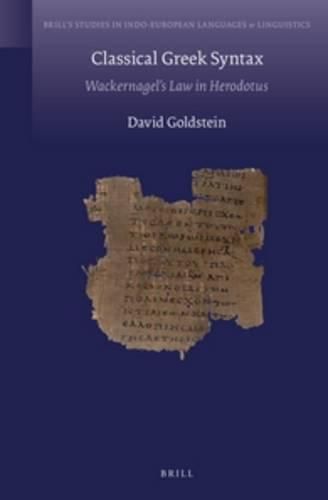Readings Newsletter
Become a Readings Member to make your shopping experience even easier.
Sign in or sign up for free!
You’re not far away from qualifying for FREE standard shipping within Australia
You’ve qualified for FREE standard shipping within Australia
The cart is loading…






In Classical Greek Syntax: Wackernagel’s Law in Herodotus, David Goldstein offers the first theoretically-informed study of second-position clitics in Ancient Greek and challenges the long-standing belief that Greek word order is free or beyond the reach of systematic analysis. On the basis of Herodotus’ Histories, he demonstrates that there are in fact systematic correspondences between clause structure and meaning. Crucial to this new model of the Greek clause is Wackernagel’s Law, the generalization that enclitics and postpositives occur in second position, as these classes of words provide a stable anchor for analyzing sentence structure. The results of this work not only restore word order as an interpretive dimension of Greek texts, but also provide a framework for the investigation of other areas of syntax in Greek, as well as archaic Indo-European more broadly.
$9.00 standard shipping within Australia
FREE standard shipping within Australia for orders over $100.00
Express & International shipping calculated at checkout
Stock availability can be subject to change without notice. We recommend calling the shop or contacting our online team to check availability of low stock items. Please see our Shopping Online page for more details.
In Classical Greek Syntax: Wackernagel’s Law in Herodotus, David Goldstein offers the first theoretically-informed study of second-position clitics in Ancient Greek and challenges the long-standing belief that Greek word order is free or beyond the reach of systematic analysis. On the basis of Herodotus’ Histories, he demonstrates that there are in fact systematic correspondences between clause structure and meaning. Crucial to this new model of the Greek clause is Wackernagel’s Law, the generalization that enclitics and postpositives occur in second position, as these classes of words provide a stable anchor for analyzing sentence structure. The results of this work not only restore word order as an interpretive dimension of Greek texts, but also provide a framework for the investigation of other areas of syntax in Greek, as well as archaic Indo-European more broadly.